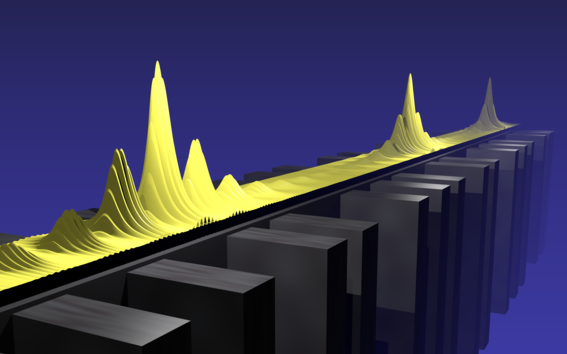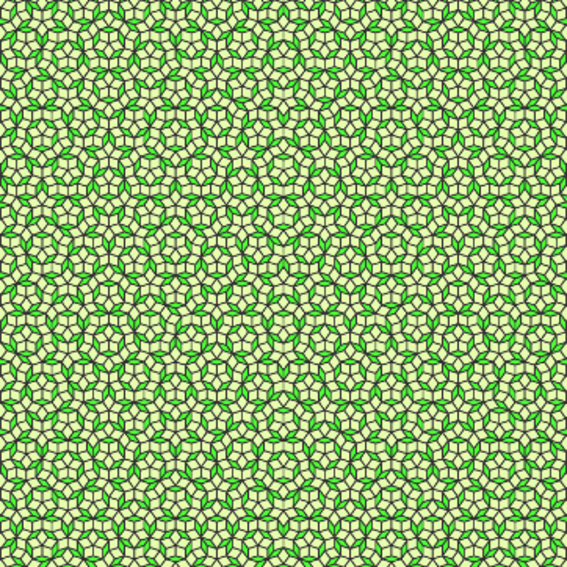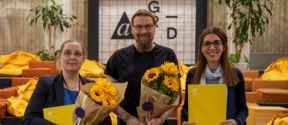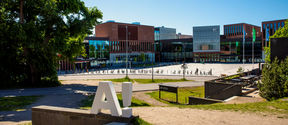A critical cascade

Quasiperiodic structures are ordered, but not in a repeating way, occupying a puzzling middle ground between periodic crystals and disordered matter. These structures have attracted long-standing attention not only in mathematics, physics, and chemistry but also from the arts. Penrose tiles are a well-known example: they can cover a floor in a systematic way that leaves no gaps, yet with a never-repeating pattern. Quasiperiodic structures remain one of the open realms in physics for researchers to explore, as the known rules that apply to ordered systems or disordered systems no longer hold.

A combined theoretical and experimental work published this week in Nature Physics now reveals how quantum particles' motion evolves towards a critical regime in quasiperiodic structures. The work is authored by Prof. Jose Lado, assistant professor in the Department of Applied Physics at Aalto University, together with his former colleagues in the group of Prof. Oded Zilberberg at ETH Zürich, and the groups of Prof. Jacqueline Bloch at Université Paris-Saclay and Prof. Alberto Amo at Lille University.
Physicists have long known that in an ordered, periodic structure, waves propagate indefinitely. With small imperfections, waves propagate less well and ultimately get trapped, a process called localization. However, quasiperiodic structures show a dramatically different phenomenon, giving rise to propagation, localization, and a third intriguing “critical” regime where waves traveling through the material behave in an entirely different way, according to the rules of quantum physics. What’s more, all three of these behaviors happen in a family of seemingly similar structures. A fundamental open question is how these different quasiperiodic structures can give rise to such dramatically different kinds of propagation, and ultimately what is the nature of the unconventional critical regime.
The theoretical team led by Oded Zilberberg, that included Antonio Štrkalj and Jose Lado, revealed using a generalized theoretical model for quasiperiodicity how this critical regime is reached in reality. They demonstrated that as the critical regime is approached, an alternating cascade of localization-delocalization transitions occurs, ultimately leading to critical wave propagation. With these findings, Valentin Goblot in the experimental team, led by Alberto Amo and Jacqueline Bloch, made real-world examples of these quasiperiodic structures in their laboratory. Sending photons through their structure, they were able to show that the very same critical cascade predicted theoretically governed the propagation of waves in their real-world device.
With this combined theoretical and experimental observation of “a cascade to criticality”, the team's findings can ultimately inspire new ways of quantum control in devices. And, in the same way quasiperiodicity transcends boundaries between disciplines, its potential to inspire fundamental and technological advances seems similarly limitless.
You can read the full paper, Emergence of criticality through a cascade of delocalization transitions in quasiperiodic chains, in Nature Physics online here: https://doi.org/10.1038/s41567-020-0908-7
You can read more about the research at the ETH Zürich website.
Contact the Researchers:

- Published:
- Updated:
Read more news

Aalto Open Science Award ceremony brought together Aaltonians to discuss open science
Last week we gathered at A Grid to celebrate the awardees of the Aalto Open Science Award 2023 and discuss open science matters with the Aalto community.
Seed funding available to boost collaboration between Aalto, KU Leuven and University of Helsinki
Aalto University, KU Leuven and the University of Helsinki launch the 2nd exploratory seed funding call to explore research collaboration possibilities. The funding call is open until 10 September 2024.
Professor Peter Hans Matthews works as a Fulbright-Aalto Distinguished Chair scholarship holder at the Department of Economics
Fulbright programmes and scholarships are highly appreciated in the United States